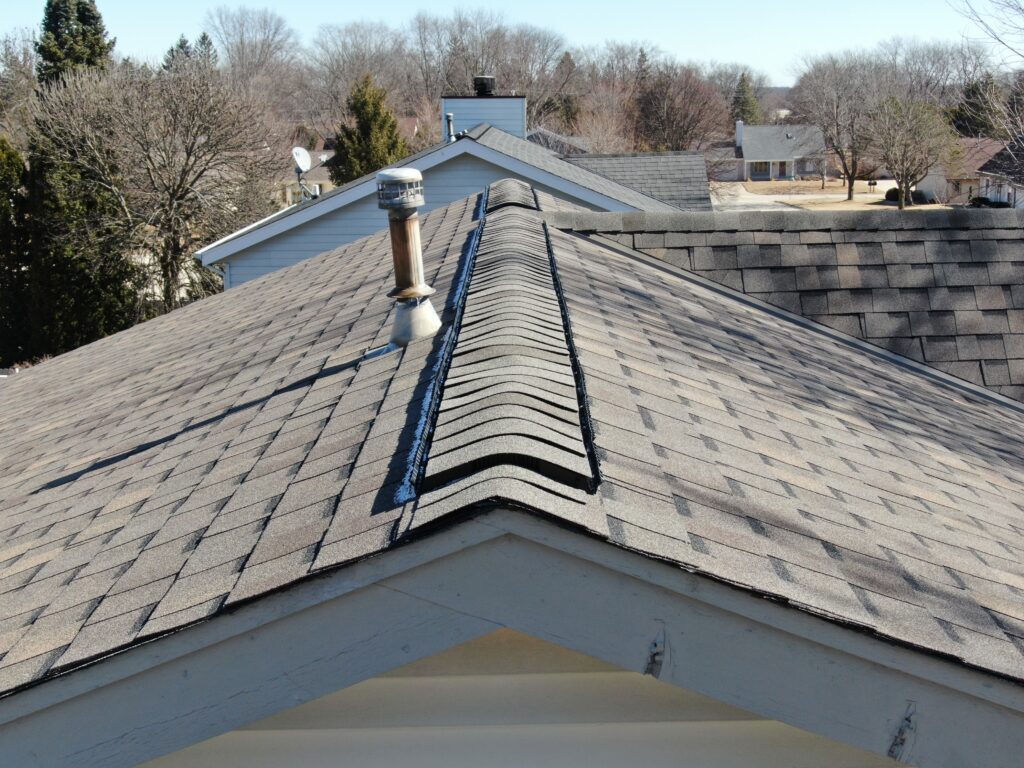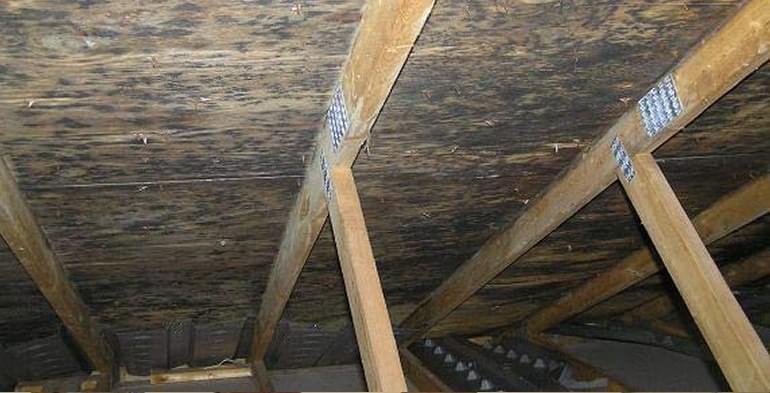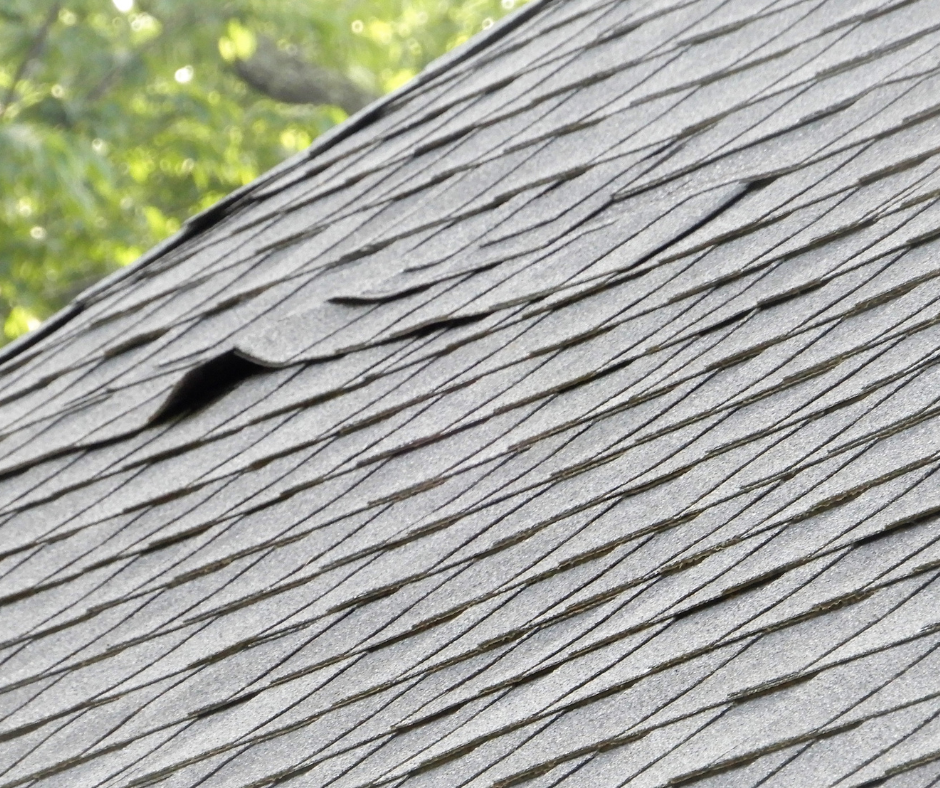7 Signs of Poor Roof Ventilation and How to Fix It
You’re probably reading this article because you’ve begun to notice the mold taking over your attic or you’ve noticed some sagging on the outside of your roof that will most certainly need to be remedied. Either way, there’s a serious issue with your roof- and now you have to get to the bottom of it. While most mold and rotted wood come from leaks that occur on the roof, it can also be caused by inadequate roof ventilation.
Here at Rescue My Roof, we’ve seen our fair share of roofing damage. Located in the Midwest, where the winters are harsh and the summers are humid, we’ve taken care of poorly ventilated and damaged roofs like yours.
That’s why we’ve compiled everything you need to know about the ventilation of your roof: signs to look for, the cost of repairs, and the process of installing the perfect amount of ventilation. Because when there’s a problem in your home, you should know exactly what is causing it and the next steps to take.
First, What is Roofing Ventilation? And Why Is It Important?

Roof ventilation is a system of intake and exhaust vents to provide air circulation that keeps the inside of your home nice and comfortable. Without it, hot air will get stuck in your home and cause a myriad of problems.
Not only will it be difficult to keep your home cool in the hot summer months, warm air typically comes with humidity. The additional moisture can cause problems with mold and mildew- which no one wants- so it’s important to have enough ventilation on your roof.
How Can I Tell If My Roof Needs More Ventilation?
To determine the correct amount of ventilation, there is a formula you can follow.
The golden formula: 1 square ft. for 150 square ft. of attic space.
You will want to have at least one square ft. of ventilation (intake or exhaust vents) for every 150 square ft. of attic space. So if you have 1,500 square feet of attic space, this is how you calculate the ventilation:
1,500 (square footage)/150= 10
According to this calculation, you will need at least 10 square feet of ventilation to properly release any humid air from your attic and properly heat and cool your home.
There is a lot of hot, humid air floating around in the attic. If you don’t want the moisture to begin to rot the wood and cause mold to grow, this is the rule your contractors should be following to ensure proper ventilation.
But if they didn’t initially follow this rule, then your home may be showing the signs that it’s time for a roof upgrade. You may notice:
1. Mold

When there is a lot of warm, humid air trapped in your attic, that moisture is going to cause mold to grow.
When you have proper ventilation, this keeps air flowing through your attic space to avoid any humid air sticking around long enough to cause problems. If you’re noticing signs of mold or mildew in your attic, it may be from a leak or poor ventilation.
2. Discoloration in the attic
Discoloration can look very similar to mold, but how advanced the discoloration is could be the difference between replacing a few wooden boards and paying for a total roof replacement.
If you notice a small area of dark black staining on the surfaces in your attic- it’s time to call an inspector. Letting the discoloration spread could mean you paying more money down the road.
3. Roof sagging
When you look dead-on at your shingles, you may notice instead of straight-across lines, some of them dip and form waves. This is a sign that there is water damage underneath the shingles that need to be addressed.
This is an issue that can be caused by leaks or poor ventilation, or maybe even a combination of both. It’s important to call a professional and get an inspection done to determine the cause.
4. Loose shingles

When there’s damage due to poor ventilation, it causes the wooden decking to delaminate. This is the process of the board becoming slick over time so that no materials (like shingles) can properly adhere to it.
If you notice you have a few loose shingles, it may not be the victim of poor ventilation. However, if you notice large areas where shingles are becoming detached it’s time to call an inspector.
5. Visible flashing
Flashing is thin sheets of metal that are used to waterproof any penetrations in the roof such as chimneys or ventilation.
If you can see the flashing, it means other materials like your shingles have moved or fallen off completely. This can be a sign of moisture and should be checked by a professional.
6. Issues with your heating and cooling systems
When you have issues with ventilation, you may notice that your home is not heating or cooling efficiently. There may be areas of the home that are significantly cooler or warmer than the rest.
This is caused by the fact that there is very little airflow throughout the home without enough intake and exhaust vents to keep the air circulating.
This issue can also be caused by having a heating or cooling unit that is too small for the size of your home, or one that needs to be updated due to age. However, if you still see you’re having an issue, poor roof ventilation may be to blame.
7. Unwanted pests
Small pests or critters can crawl in and take up residency in your vents and home. If there are cracks where they can get in-the chances are they will try.
If you are finding a lot of unwanted pests in your home, it’s time to do a check-up on your vents to see if that is their entry point.
It is important to be aware of the state of your roof, because even with a home inspection someone may still be unable to detect issues. Not every inspector has experience in roofing or building, so they may not do a thorough check of your attic space or roof. But noticing those 7 signs of a lack of ventilation can help keep your home safe.
How to Fix Issues Caused by Improper Roof Ventilation
If the Damage Isn’t Too Far Along- Add More Roof Ventilation
The best thing to do is to find a trusted roofing company to handle the job for you. Roofing projects are harder to DIY than you’d imagine, and all of the decking underneath the shingles should be inspected to make sure there are not rotted areas.
When a crew comes to fix the ventilation, here’s what they could do for you: evaluate the roof and attic to see how far along the damage is.
If they only notice discoloring beginning to happen in the attic- you may be in luck. Not only can they fix it, but they can add a few years onto your roof before you will need a total roof replacement. Adding additional vents to remedy the problem should do the trick.
Exhaust Vents are Cool, But you Must Install Intake Vents Too
It is important to note that not just installing exhaust vents will fix the issues. Exhaust vents release the hot, humid air from your attic, but equally, important intake vents allow cool air to flow into your attic. If intake vents aren’t addressed, you will continue to see issues. Talk to your contractor to make the entirety of the system has been serviced.
The Final Destination: A Total Roof Replacement
If they notice that the damage has begun to cause delimitation of the wood- meaning that it has become too slick and nothing will adhere to it- that will require a total roof replacement. Even if more vents are added, you will still see problems like sagging, loose shingles, and an increased possibility of leaks.
How Long Will It Take to Fix The Roof Ventilation?
This will vary from company to company. Companies with smaller crews who are working with more severe damage may take longer to get the job done.
However, improving existing ventilation will be faster. The primary focus will be adding more intake and exhaust vents to make sure the air is circulating accordingly throughout your home. This process should last approximately a day.
If you are looking to conquer a full roof replacement, this process will take much longer. The crews will have to tear off the existing materials, install the new roof, and do a full cleanup. Depending on the materials and weather conditions, this may take anywhere from two days to three weeks.
You can read more about it here: How Long Will My Roof Replacement or Repair Take?
What is the Cost Of Fixing Roof Ventilation?
This is very dependent on how bad the existing damage is. More simple damage, like discoloration in the attic, can be fixed by adding additional vents, which starts at $1,500.
If the damage is more severe (ex: delamination) you will be responsible for the additional materials and labor that come along with installing new decking.
If the damage has been done beyond repair, it is time for a total roof replacement. On average in the U.S., a roof replacement can cost anywhere from $7,000 to $13,000 depending on how complex the job is. Broken down by square feet, it is approximately $4.50-$5 per Square foot.
Should I Check Into Fixing My Roof Ventilation?
If you’ve noticed some of the signs above, then the answer is yes. At the very least, you should have a professional come out to inspect your home.
They give you a more clear view of what you’ll be facing, and provide an estimate at the time of inspection. You’ll leave that appointment feeling much better about the safety of your home instead of facing the unknown.
Learn more with “What to Expect at Your Roof Estimation Appointment” and “10 Qualities to Look For in a Roofing Contractor.”
Rescue My Roof can provide an inspection and estimate free of cost in southeastern Wisconsin. Contact us today to get a free estimate.


